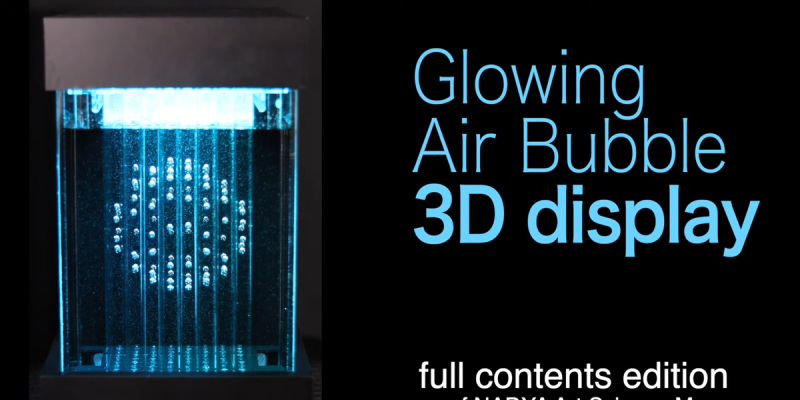Zen and Glowing Air Bubble Displays

When you work in a medium for long enough, and you learn how it works more and more deeply, you eventually become its master. [Yukio Shinoda] is probably master of the LED bubble display.
She started out with an idea, back in 1994, of a column of water and an array of solenoids to inject air, making patterns in the bubbles. Time passed, and she began to realize these works, first in water and then switching over to glycerine for slower, more predictable, and more spherical bubbles. The latest version realizes her initial vision, after 29 years, with an 8×8 array of nozzles making 3D shapes in the slowly rising columns.
To get a feel for the different stages of incremental progress, you really should watch all the videos, of version 1 in water, version 2 in glycerin, version 3 with fonts and FFT mode, and finally version 4 in 3D, embedded below.
It looks easy on paper: inject bubbles in to the fluid in time, and you get patterns. But the details here include separate tubes for each bubble, to prevent them from interacting, and careful attention to the timing. Indeed, the bubble clock has to adjust itself continually to take the viscosity of the glycerine into account, which changes with temperature in this video demo. Conveniently, the common DS3231 clock modules also have a temperature sensor built in, making this all a matter of code.
The soft clicking of the solenoids are reminiscent of flip-dot displays, but the slow rise of the bubbles is more meditative. And while the precision of the later models is admirable, we definitely also love the jumpy effect in the water version when a new bubble is introduced and the air pressure settles into its new circumstances. Fun stuff!
Is this the first bubble display we’ve seen? Not by a long shot. And it’s not the biggest or the simplest. But as far as we’re concerned, it’s one of the most refined, relaxing, and most evolved. But we have to admit, we’re also looking forward to version 5. What’s next?
Post a Comment